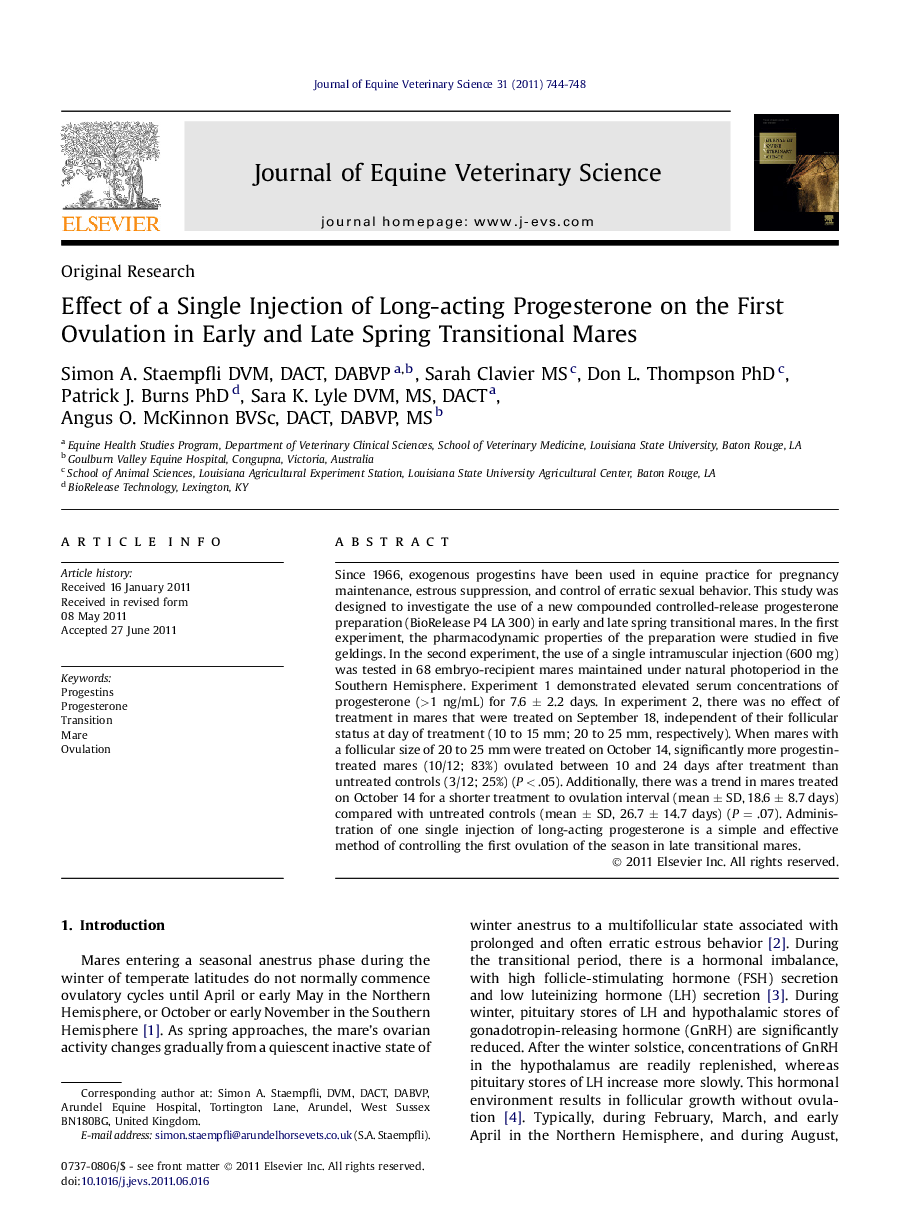| Article ID | Journal | Published Year | Pages | File Type |
|---|---|---|---|---|
| 10961749 | Journal of Equine Veterinary Science | 2011 | 5 Pages |
Abstract
Since 1966, exogenous progestins have been used in equine practice for pregnancy maintenance, estrous suppression, and control of erratic sexual behavior. This study was designed to investigate the use of a new compounded controlled-release progesterone preparation (BioRelease P4 LA 300) in early and late spring transitional mares. In the first experiment, the pharmacodynamic properties of the preparation were studied in five geldings. In the second experiment, the use of a single intramuscular injection (600 mg) was tested in 68 embryo-recipient mares maintained under natural photoperiod in the Southern Hemisphere. Experiment 1 demonstrated elevated serum concentrations of progesterone (>1 ng/mL) for 7.6 ± 2.2 days. In experiment 2, there was no effect of treatment in mares that were treated on September 18, independent of their follicular status at day of treatment (10 to 15 mm; 20 to 25 mm, respectively). When mares with a follicular size of 20 to 25 mm were treated on October 14, significantly more progestin-treated mares (10/12; 83%) ovulated between 10 and 24 days after treatment than untreated controls (3/12; 25%) (P < .05). Additionally, there was a trend in mares treated on October 14 for a shorter treatment to ovulation interval (mean ± SD, 18.6 ± 8.7 days) compared with untreated controls (mean ± SD, 26.7 ± 14.7 days) (P = .07). Administration of one single injection of long-acting progesterone is a simple and effective method of controlling the first ovulation of the season in late transitional mares.
Related Topics
Life Sciences
Agricultural and Biological Sciences
Animal Science and Zoology
Authors
Simon A. DVM, DACT, DABVP, Sarah MS, Don L. PhD, Patrick J. PhD, Sara K. DVM, MS, DACT, Angus O. BVSc, DACT, DABVP, MS,
